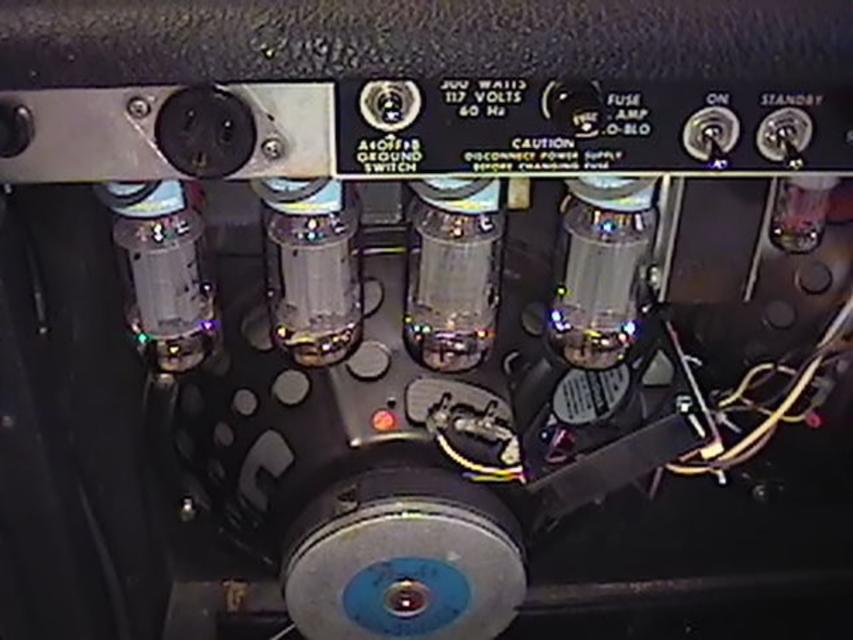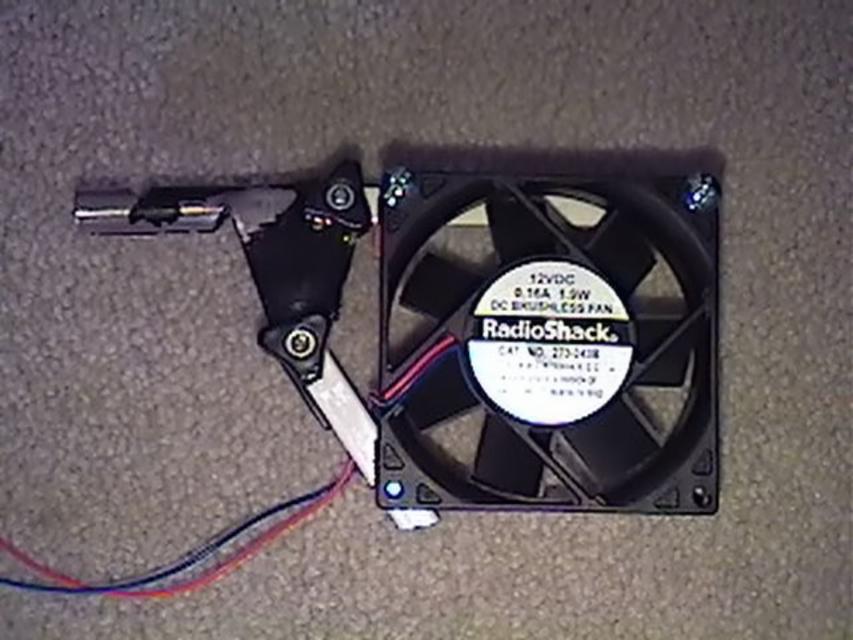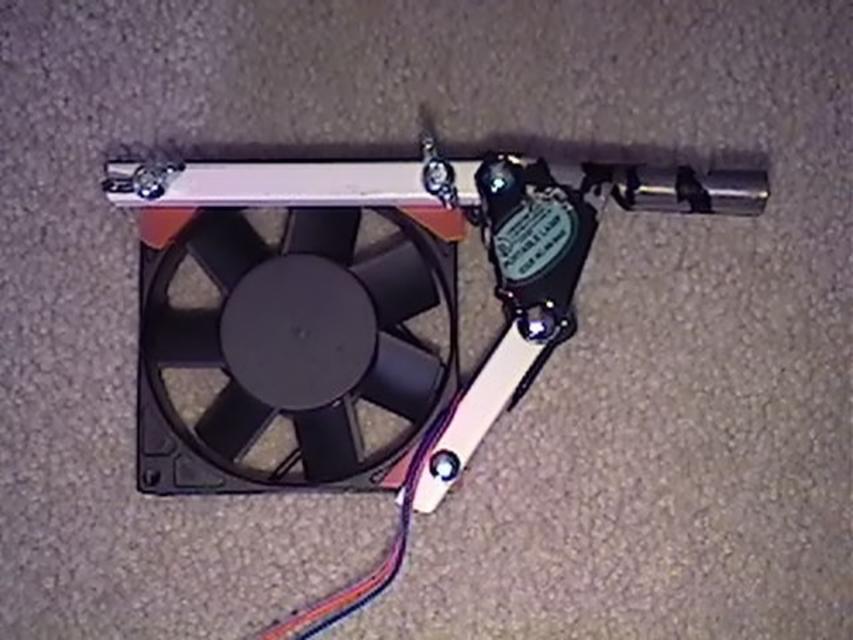
I decided to install a cooling fan to keep the power tubes
cooler.
The silverface master volume control Twin Reverbs run the 6L6GC's
pretty hot.
Heat is the mortal enemy of electrical components.
So... why not help them stay cooler?

1. I used a 3" diameter brushless 12VDC cooling fan
like you would find in a computer power supply.
It moves 26 cu. ft. per minute (cfm). You can get them at
RadioShack
for about $14.00.
I used a brushless fan to avoid having the power tubes possibly
picking up
any electro-magnetic interference from the fan.
I installed it at a 45 degree angle
so that it blows up towards all of the power tubes.

2.
Here is a view from behind.
The most challenging thing was to build some kind of fan support.
I recycled an old non-operative swing arm desk lamp.

3.
Here is a close-up of the fan support bracket. I cut the arms to
the length
I needed, and drilled holes as needed.
Then I attached the fan to the arms using long machine screws and
wing nuts
for easy removal. I drilled holes in the base and attached a
1/8" felt pad to the mating surface.
Then I fastened the base to the speaker baffle with two
short wood screws. Then I inserted the rest of the assembly into
the base.
It works perfect! And it looks good, too.

4.
Outlet side of fan showing bracket.

5. Inlet side of fan showing bracket.

6.
Here is the base into which the bracket inserts.
This works real well for adjusting the "angle of
attack".
I found that it was necessary to also use some rubber gasketing
between the fan and the arms to soften the vibration transmitted
to the speaker cabinet. If you don't use the felt and rubber
pads, it will probably annoy you until you get sound out of the
amp.
It is a lot quieter this way. Experiment a little to find what
works the best.
To power the fan, I used a selectable voltage
"wall-wart" transformer. For praticing at home, I've
found that the best settings are either 7.5v or 9v. This gives a
good balance between low noise and good air movement. If you plan
on playing for several hours, you can put it on the 12V setting a
really blow a lot of air across the tubes. To wire it, I clipped
the plug off of the end of the wire and connected it directly to
the fan leads. I then used a short extension cord to plug the
transformer into the 120V outlet on the back of the amp. I
installed a rotary switch in the extension cord to turn it on and
off.
(A rotary switch is like the switch you may find on some lamp
cords.)
The advantage to doing it this way is that there is very minimal
alteration to the amp, keeping it as original as possible.